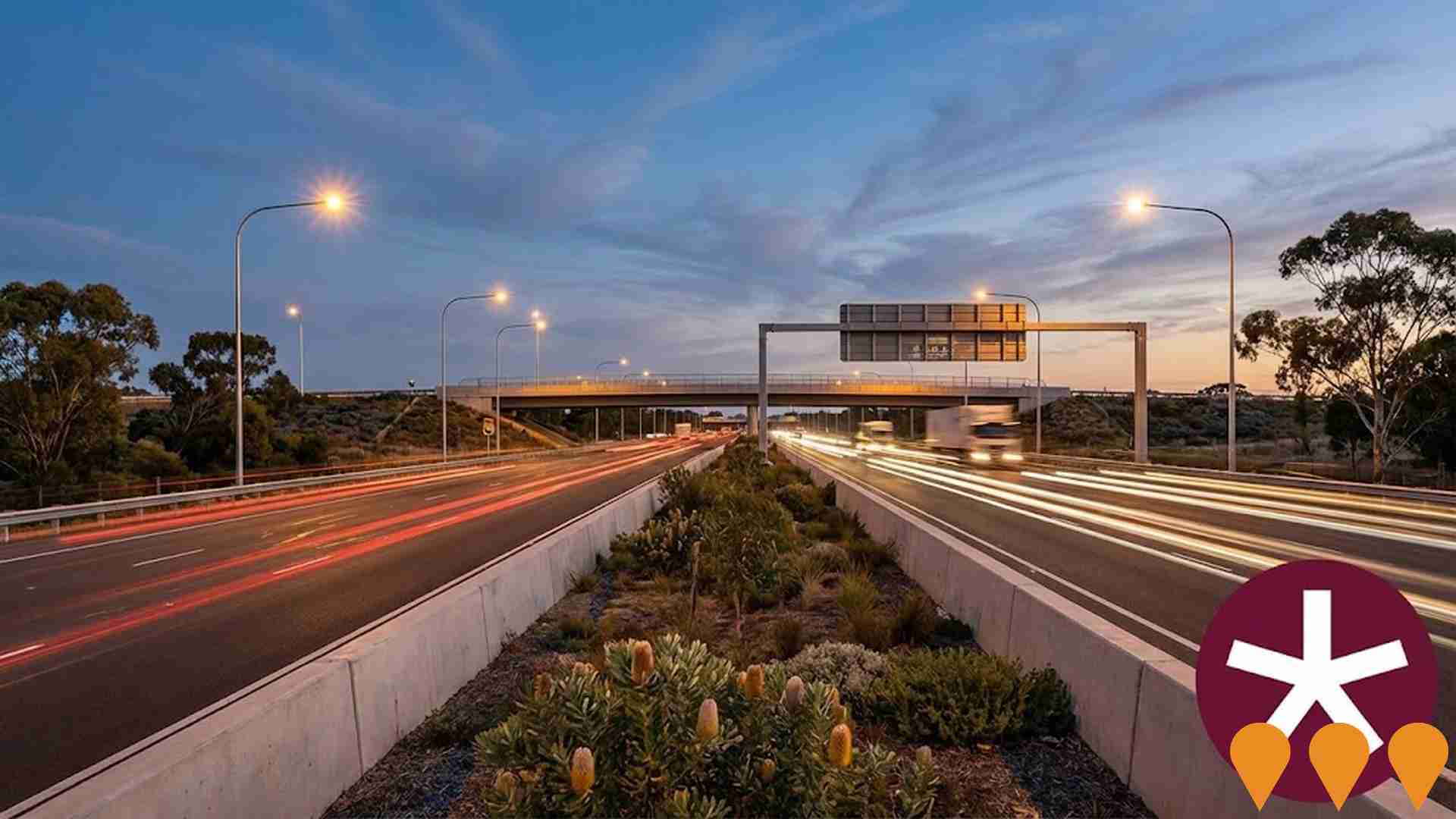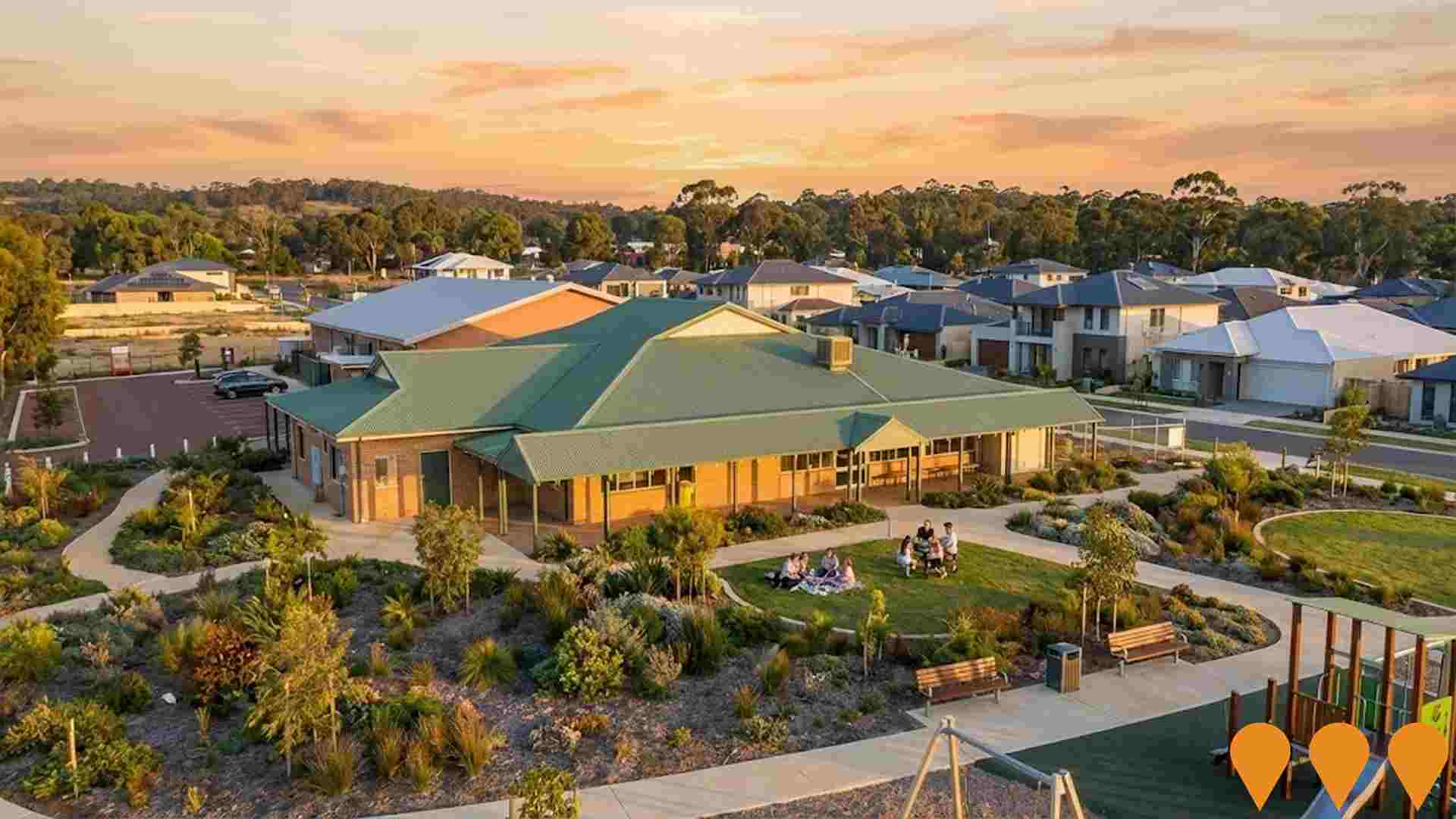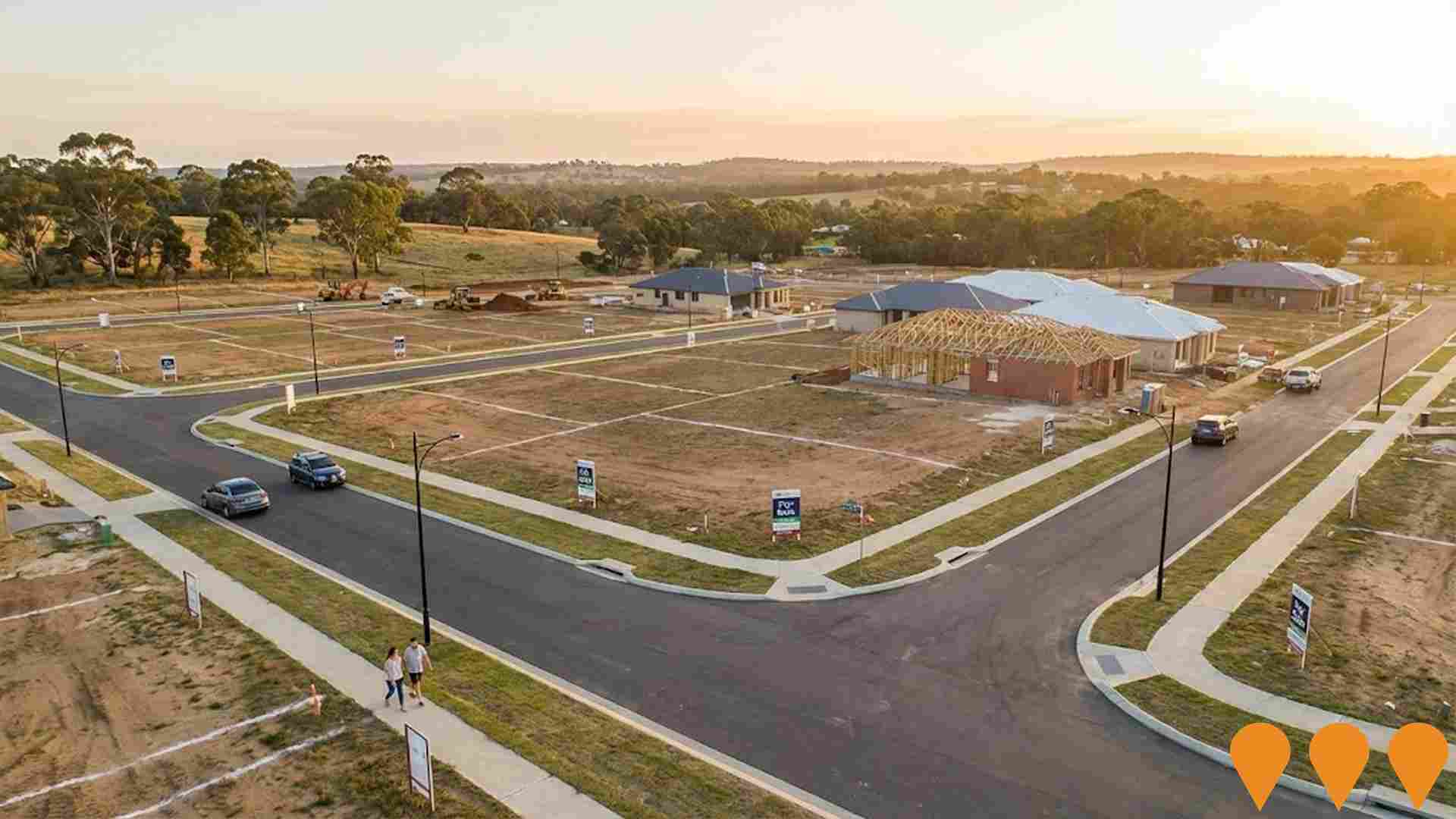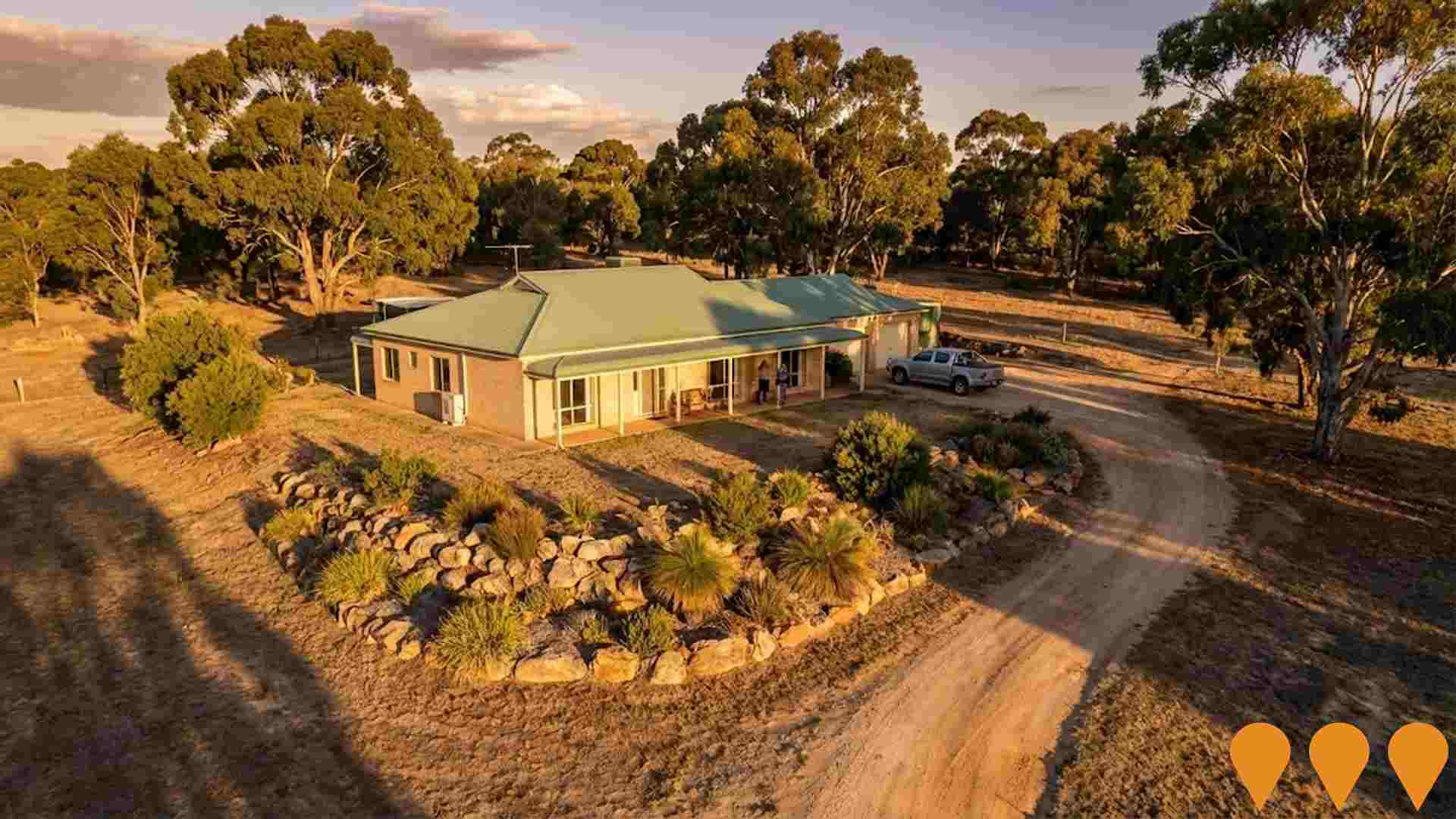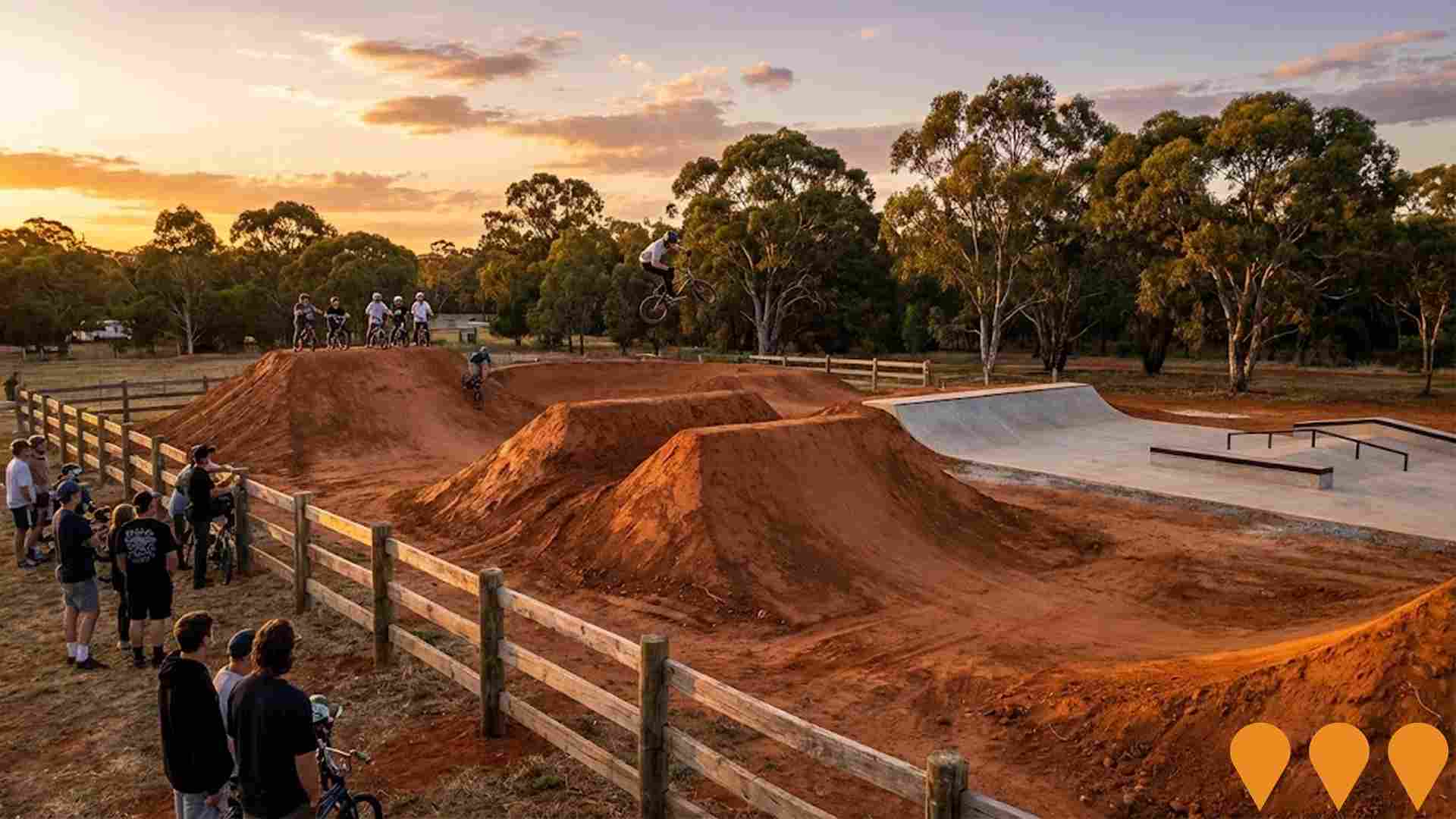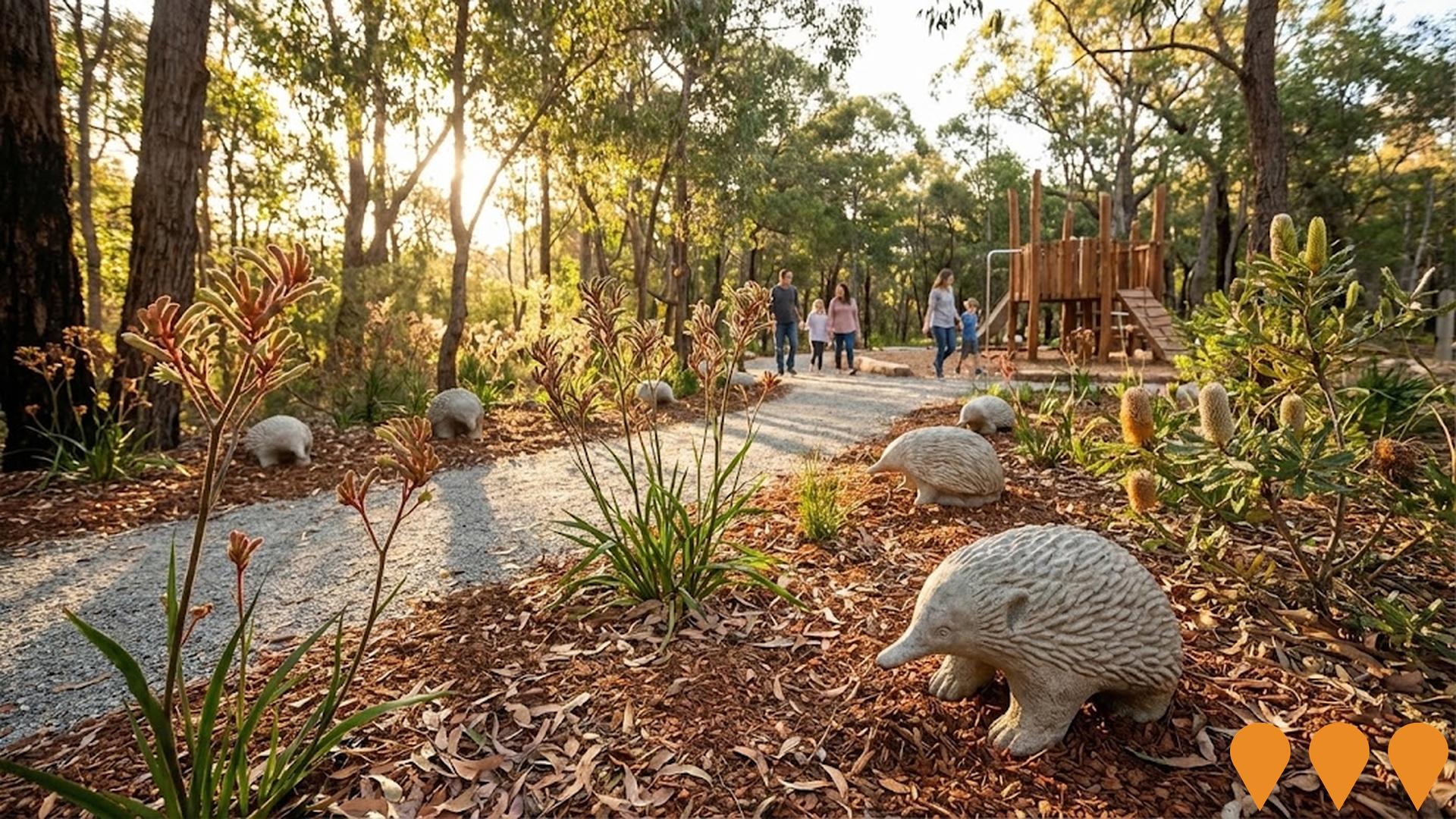Chart Color Schemes
est. as @ -- *
ABS ERP | -- people | --
2021 Census | -- people
Sales Activity
Curious about local property values? Filter the chart to assess the volume and appreciation (including resales) trends and regional comparisons, or scroll to the map below view this information at an individual property level.
Find a Recent Sale
Sales Detail
Population
An assessment of population growth drivers in Gidgegannup reveals an overall ranking slightly below national averages considering recent, and medium term trends
Gidgegannup's population is approximately 3,140 as of August 2025. This figure represents an increase of 322 people (11.4%) since the 2021 Census, which reported a population of 2,818. The change is inferred from the estimated resident population of 3,132 in June 2024 and an additional 19 validated new addresses since the Census date. This results in a population density ratio of 10.3 persons per square kilometer. Gidgegannup's growth rate of 11.4% since the 2021 census exceeds the national average of 8.6%, indicating it as a region with significant growth. Interstate migration contributed approximately 65.3% of overall population gains during recent periods, with all drivers including overseas migration and natural growth being positive factors.
AreaSearch is using ABS/Geoscience Australia projections for each SA2 area, released in 2024 with a base year of 2022. For areas not covered by this data, AreaSearch utilises growth rates by age cohort provided by the ABS in its latest Greater Capital Region projections (released in 2023, based on 2022 data). Future population trends suggest an increase just below the national median, with the area expected to expand by 209 persons to reach a total of approximately 3,417 by 2041, reflecting an overall increase of 6.4% over the 17-year period.
Frequently Asked Questions - Population
Development
Recent residential development output has been above average within Gidgegannup when compared nationally
Gidgegannup averaged approximately 27 new dwelling approvals annually. Between FY-21 and FY-25139 homes were approved, with an additional 4 approved in FY-26 to date. Each dwelling built over the past five financial years attracted an average of 2.3 new residents annually.
New homes are constructed at an average cost of $490,000. This year has seen $834,000 in commercial development approvals, indicating minimal commercial activity compared to residential growth. Compared to Greater Perth, Gidgegannup's new dwelling approval rate per person is around three-quarters, placing it among the 71st percentile nationally for areas assessed.
All new construction consists of detached houses, maintaining the area's low-density character and appealing to families seeking space. With approximately 187 people per dwelling approval, Gidgegannup exhibits growth area characteristics. Population forecasts project an increase of 201 residents by 2041. Current development patterns suggest that new housing supply will readily meet demand, creating favorable conditions for buyers and potentially facilitating further population growth beyond current projections.
Frequently Asked Questions - Development
Infrastructure
Gidgegannup has limited levels of nearby infrastructure activity, ranking in the 16thth percentile nationally
Changes to local infrastructure significantly influence an area's performance. AreaSearch has identified 11 projects likely impacting the area. Major initiatives include EastLink WA, Gidgegannup Town Site development, Gidgegannup Showgrounds Upgrade (scheduled for completion by August 2023), and Gidgegannup Play Space Public Art project (commenced July 2021). The following list details projects of most relevance.
Professional plan users can use the search below to filter and access additional projects.
INFRASTRUCTURE SEARCH
 Denotes AI-based impression for illustrative purposes only, not to be taken as definitive under any circumstances. Please follow links and conduct other investigations from the project's source for actual imagery. Developers and project owners wishing us to use original imagery please Contact Us and we will do so.
Denotes AI-based impression for illustrative purposes only, not to be taken as definitive under any circumstances. Please follow links and conduct other investigations from the project's source for actual imagery. Developers and project owners wishing us to use original imagery please Contact Us and we will do so.
Frequently Asked Questions - Infrastructure
METRONET
METRONET is Western Australia's largest-ever public transport infrastructure program, delivering over 72 kilometres of new passenger rail and 23 new stations across the Perth metropolitan area. As of December 2025, multiple stages are complete or nearing completion: Yanchep Rail Extension (opened July 2024), Morley-Ellenbrook Line (opened December 2024), Thornlie-Cockburn Link (opened June 2025), and Byford Rail Extension (opened October 2025). Remaining projects including the Airport Line upgrades, Victoria Park-Canning Level Crossing Removal (six crossings removed by late 2025), Circle Route Bus Priority, and final stages of the Ellenbrook Line are under active construction, with the overall program on track for substantial completion by 2027-2028. The program also includes 246 locally built C-series railcars, high-capacity signalling, and extensive station precinct activation.
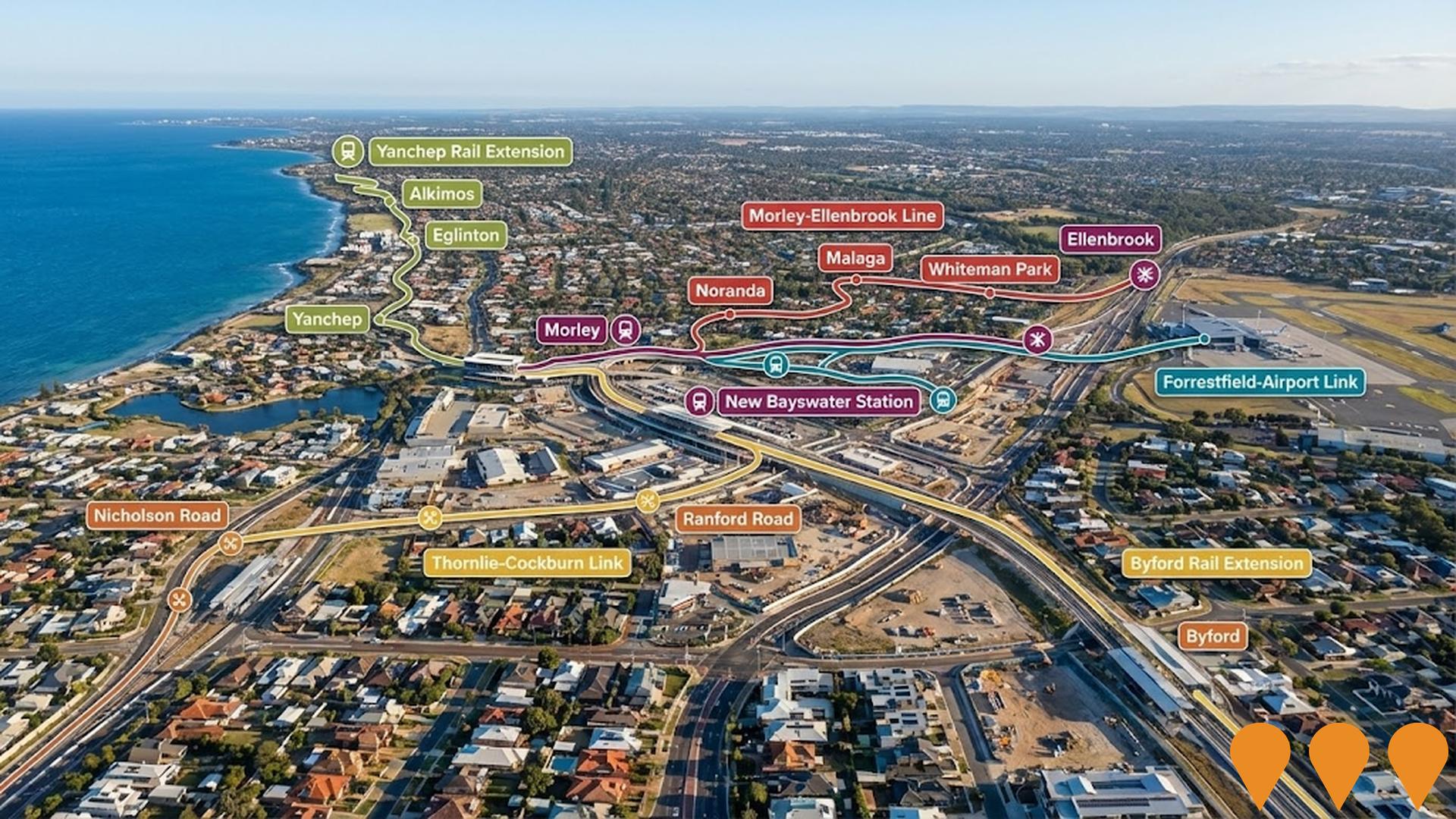
Bullsbrook Freight and Industrial Land Use Strategy
Long-term strategic framework to guide the development of over 2,500 hectares of industrial and employment land in Bullsbrook, supporting a future intermodal freight terminal and associated logistics and advanced manufacturing uses. Expected to generate up to 40,000 jobs over a 50+ year horizon.

City of Swan Water and Wastewater Upgrades
Major water and wastewater infrastructure upgrades across the City of Swan to support continued population growth in Perths north-eastern corridor. Works include new and upgraded water mains, wastewater pressure mains, pump stations and storage tanks to improve supply reliability and capacity.

METRONET High Capacity Signalling Project
City wide upgrade of Perth's urban rail signalling and train control systems to a communications based train control automatic train control system across about 500 km of the Transperth network, increasing capacity by up to 40 percent and supporting more frequent, reliable METRONET passenger services. Works include new in cab signalling, trackside equipment, integration with the Public Transport Operations Control Centre and digital radio, delivered progressively over about a decade.
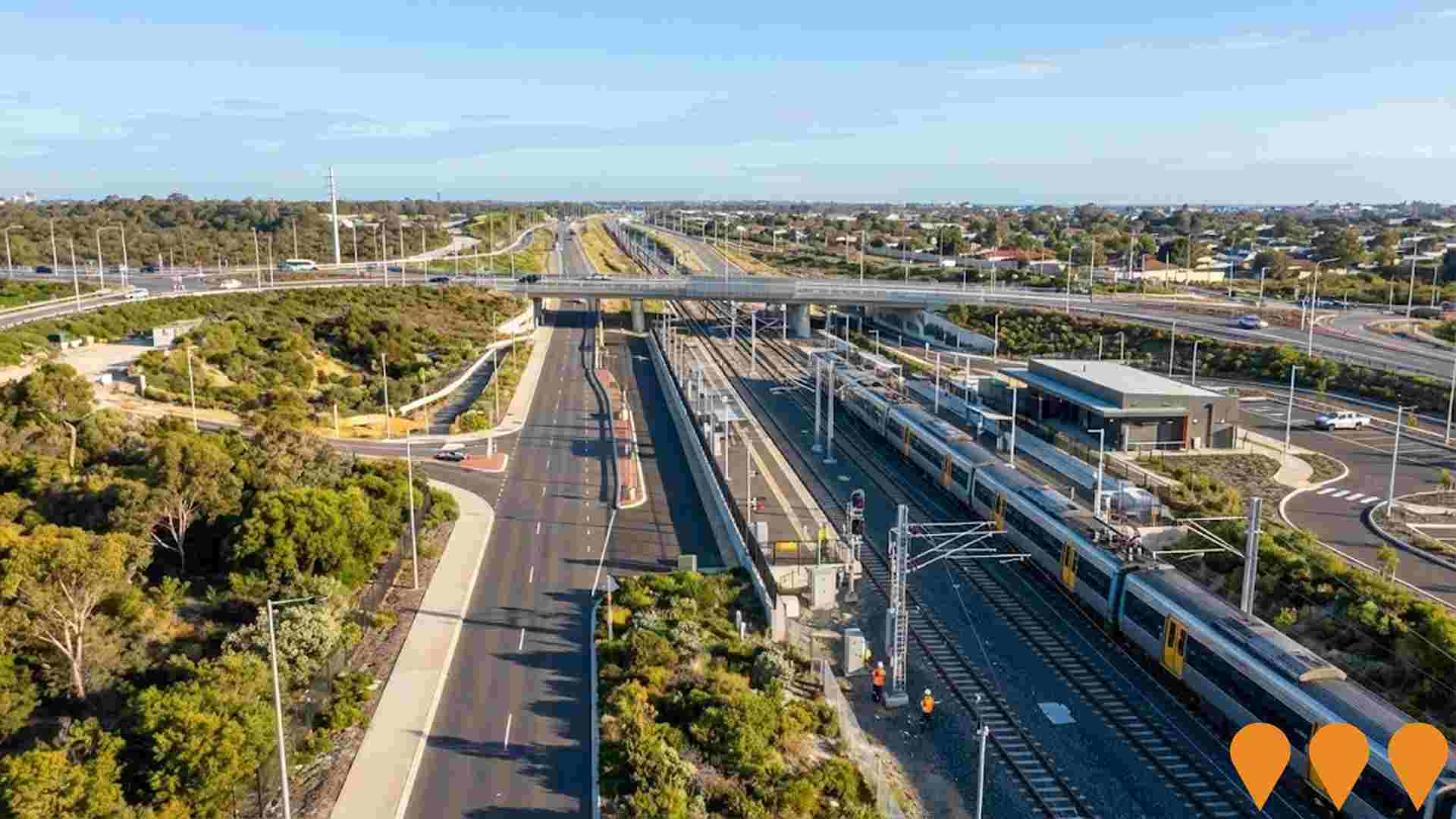
Kingsford at Bullsbrook Estate
Master-planned residential estate creating 2,500 single residential lots over 14 years. Features retained natural bushland, Ki-It Monger Brook, elevated homesites with views, and community facilities including 41ha of public open space.
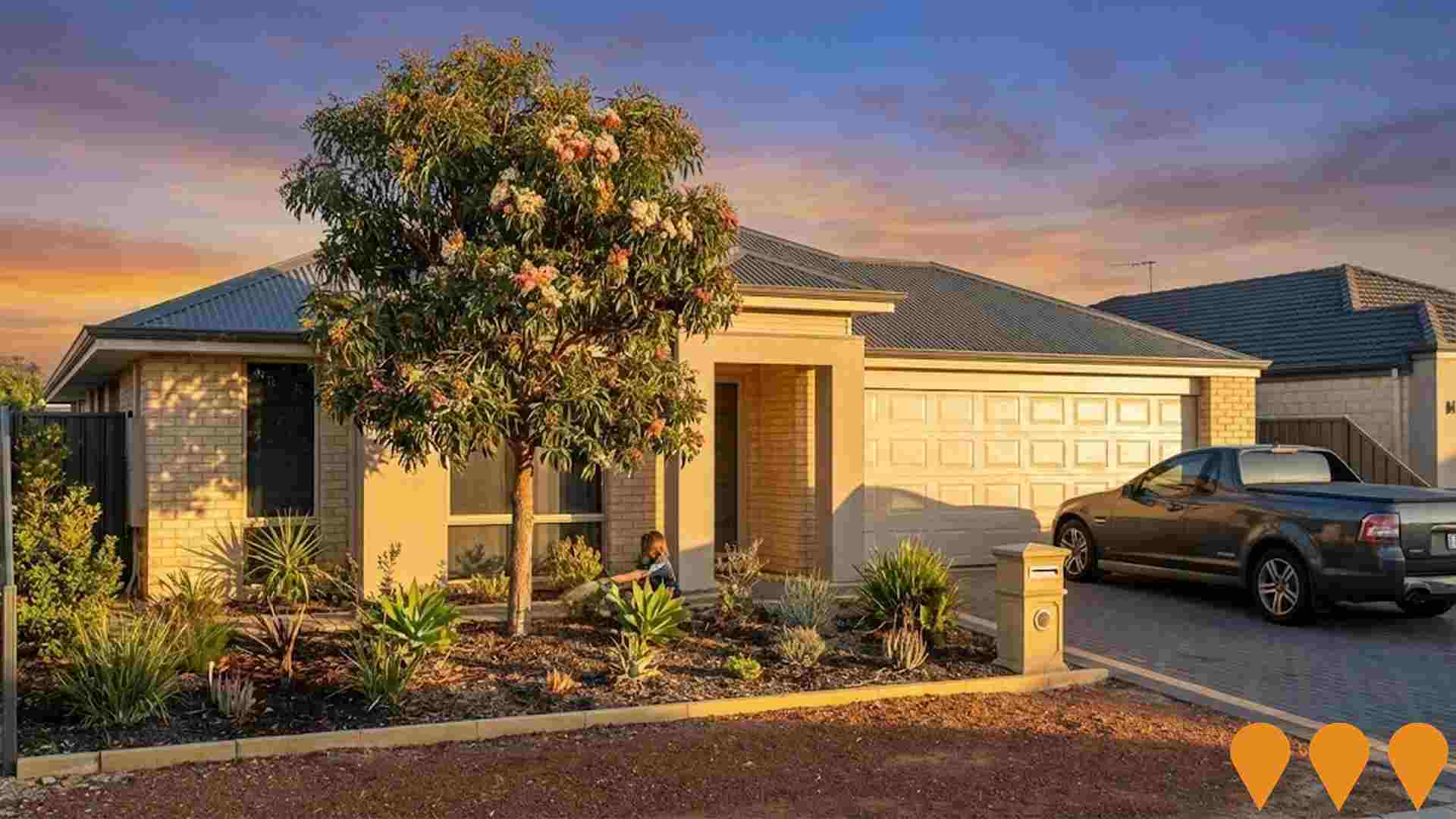
Bullsbrook Intermodal Transport Facility
Strategic planning is continuing for a future intermodal freight terminal in Bullsbrook to shift freight from road to rail and support industrial development in the City of Swan. The prior Market-led Proposal by Harvis Capital did not proceed beyond Stage 2; however, the State has since declared Planning Control Area 186 to protect land for a potential Bullsbrook Intermodal Transport Facility while broader land use and infrastructure planning progresses.
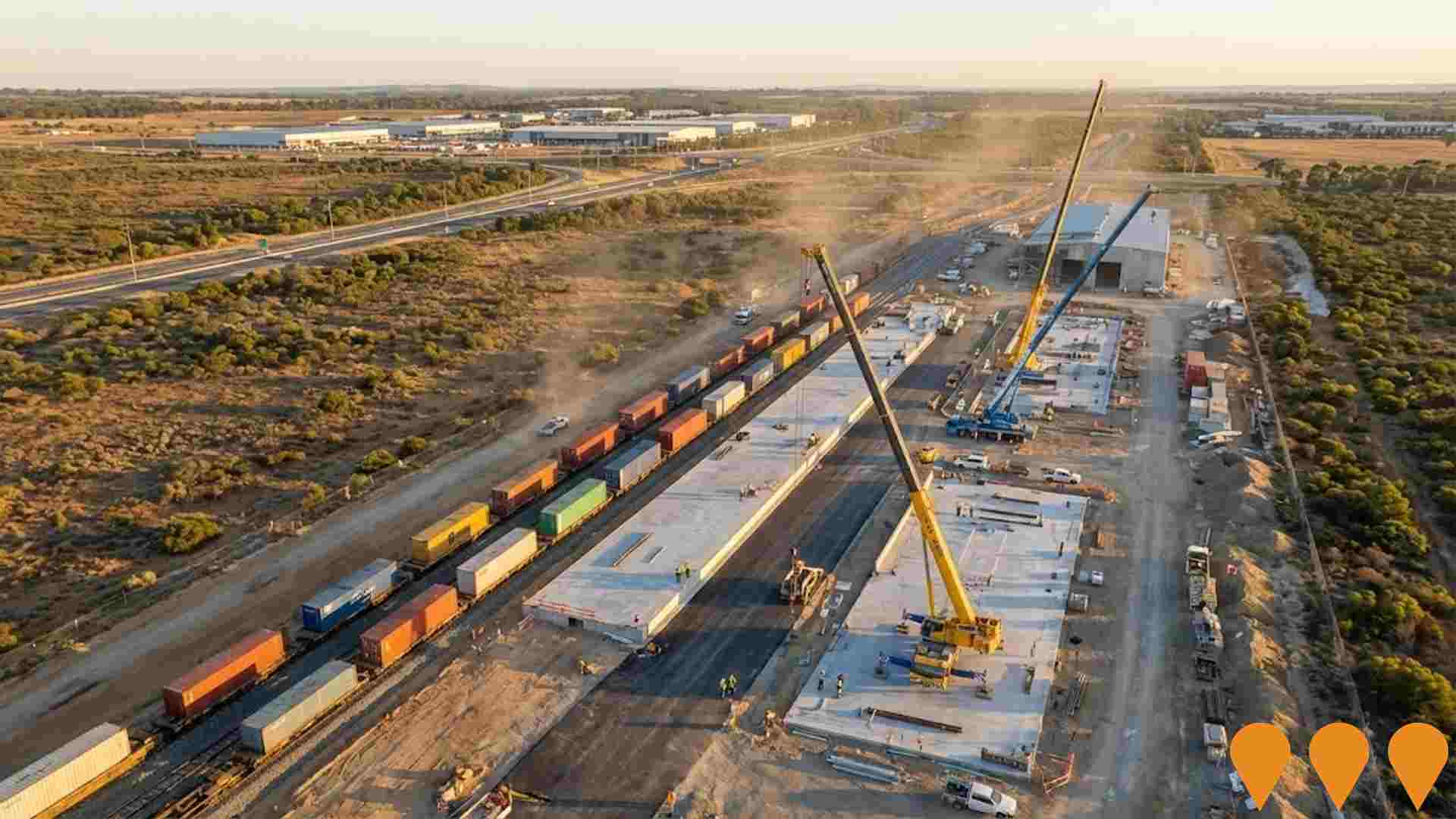
Bullsbrook District Open Space and Community Centre
New district-level community infrastructure including open space masterplan, community centre facilities, sports fields, and recreational amenities. Part of 5-year infrastructure plan for growing Bullsbrook community.
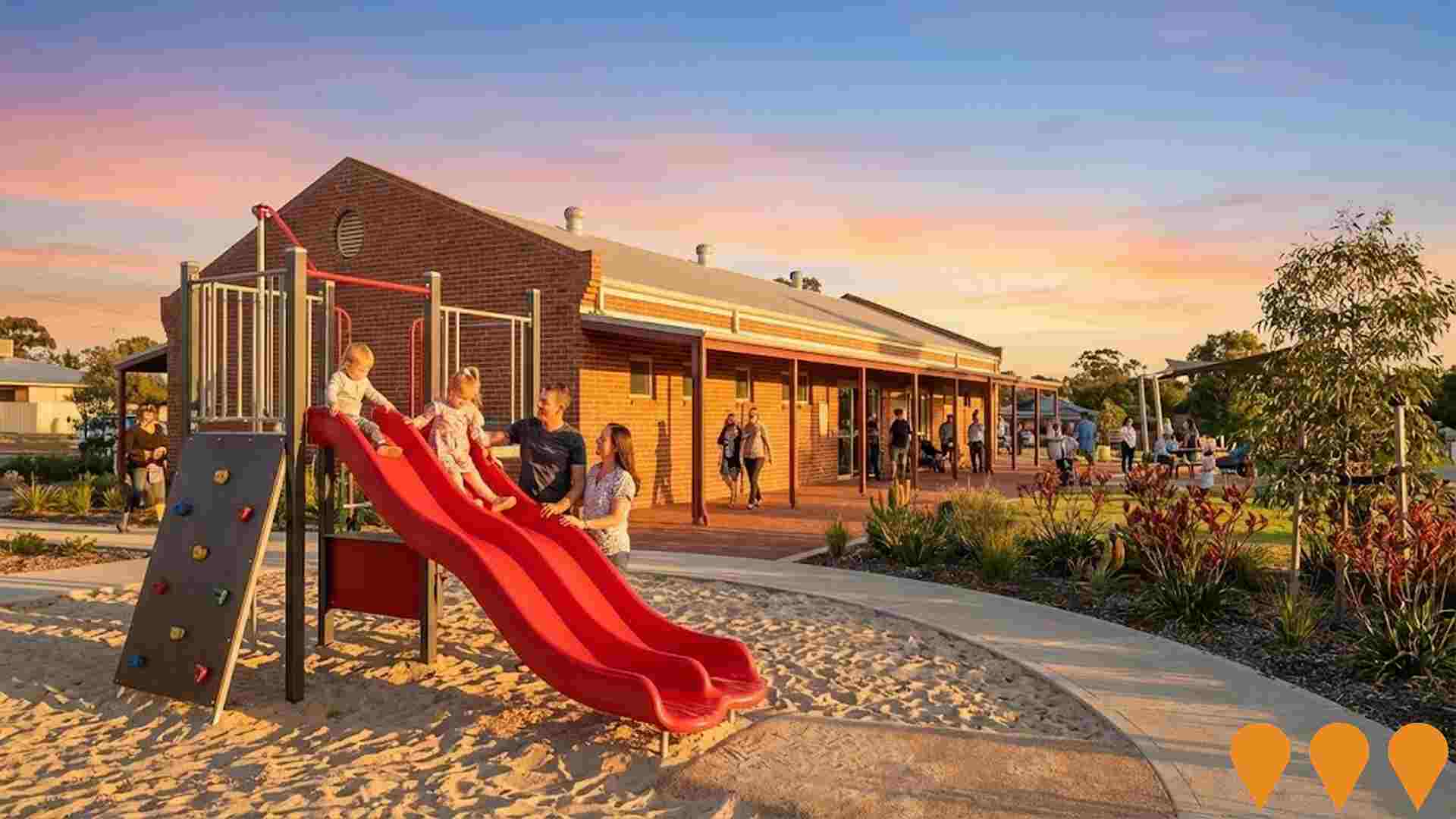
Stock Road Upgrade
71 million dollar infrastructure project creating 4.3km connection between Great Northern Highway and Tonkin Highway. Features bridge over Ellen Brook, rail crossing with boom gates, T-intersections and roundabout.
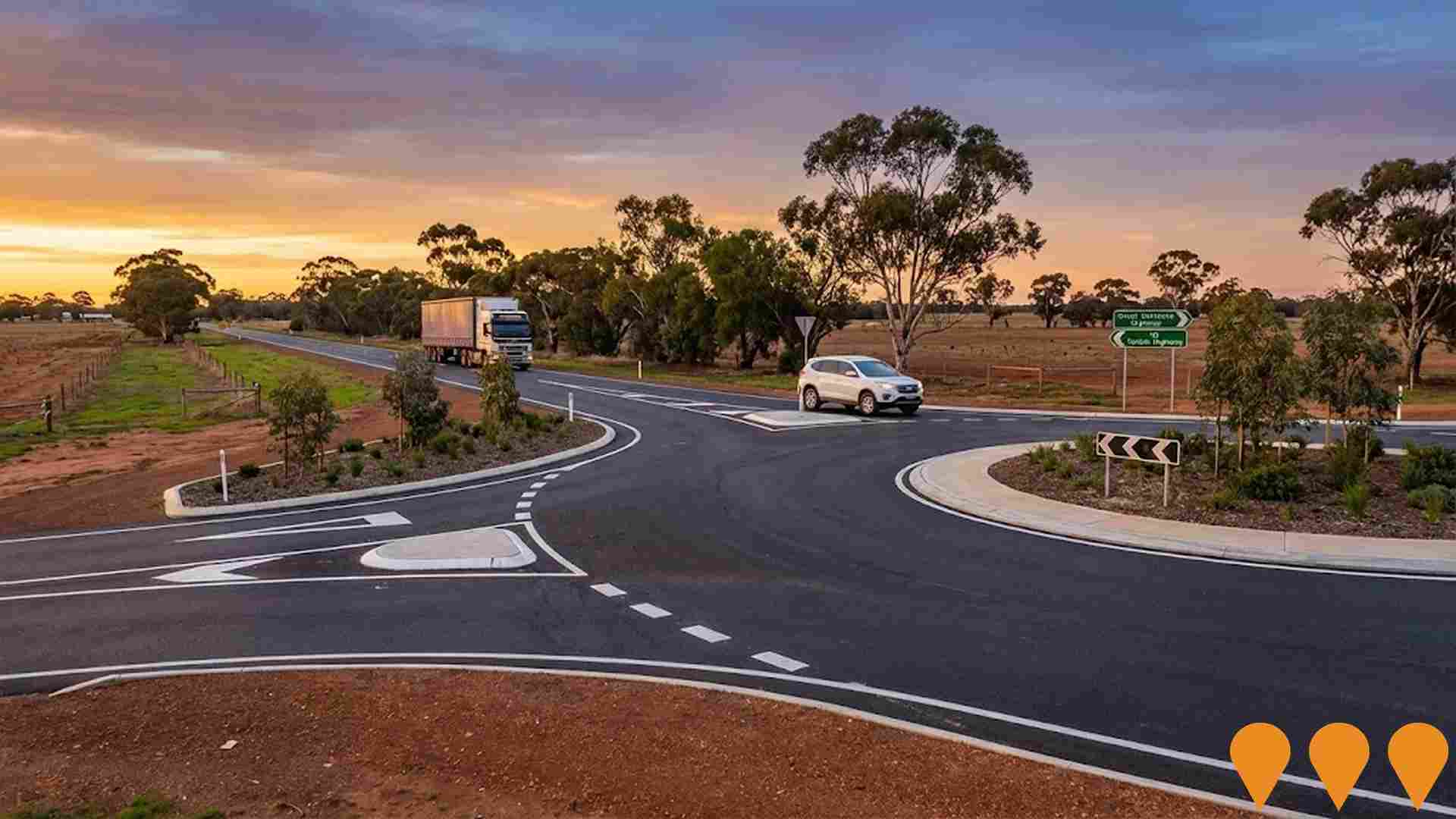
Employment
Employment conditions in Gidgegannup rank among the top 10% of areas assessed nationally
Gidgegannup has a skilled workforce with strong representation in manufacturing and industrial sectors. Its unemployment rate was 1.6% as of June 2025.
This rate is 2.3% lower than Greater Perth's rate of 3.9%. Workforce participation in Gidgegannup is similar to Greater Perth's 65.2%. Leading employment industries include mining, construction, and health care & social assistance. Notably, agriculture, forestry & fishing has a concentration 7.9 times the regional average.
However, health care & social assistance employs only 9.8% of local workers, lower than Greater Perth's 14.8%. Employment opportunities locally may be limited as indicated by the Census working population vs resident population count. From June 2023 to June 2025, employment levels increased by 4.2%, while labour force and unemployment remained essentially unchanged. In comparison, Greater Perth recorded employment growth of 3.7% with unemployment rising slightly. Jobs and Skills Australia's national employment forecasts from May 2025 project national employment growth of 6.6% over five years and 13.7% over ten years. Applying these projections to Gidgegannup's employment mix suggests local growth of approximately 5.6% over five years and 12.1% over ten years, though this is a simple extrapolation for illustrative purposes only.
Frequently Asked Questions - Employment
Income
Income metrics indicate excellent economic conditions, with the area achieving higher performance than 75% of national locations assessed by AreaSearch
AreaSearch aggregated latest postcode level ATO data for financial year 2022. Gidgegannup had a median income of $58,003 and an average income of $86,615 among taxpayers. This was one of the highest in Australia, compared to Greater Perth's median of $58,380 and average of $78,020. Based on Wage Price Index growth of 14.2% since financial year 2022, current estimates for Gidgegannup would be approximately $66,239 (median) and $98,914 (average) as of September 2025. According to the 2021 Census, household incomes in Gidgegannup ranked at the 90th percentile with a weekly income of $2,449. The largest income segment comprised 28.9% earning between $1,500 and $2,999 weekly (907 residents), similar to regional levels where 32.0% fell within this range. Higher earners accounted for a substantial presence with 39.0% exceeding $3,000 weekly, indicating strong purchasing power in the community. After housing costs, residents retained 87.2% of their income, reflecting strong purchasing power and the area's SEIFA income ranking placed it in the 7th decile.
Frequently Asked Questions - Income
Housing
Gidgegannup is characterized by a predominantly suburban housing profile, with above-average rates of outright home ownership
Gidgegannup's housing structure, as per the latest Census, was 98.7% houses and 1.3% other dwellings. In comparison, Perth metro had 89.1% houses and 10.9% other dwellings. Home ownership in Gidgegannup stood at 38.6%, with mortgaged dwellings at 54.5% and rented ones at 6.9%. The median monthly mortgage repayment was $2,300, higher than Perth metro's average of $1,842. Median weekly rent in Gidgegannup was $350, compared to Perth metro's $340. Nationally, Gidgegannup's mortgage repayments were higher at $2,300 against the Australian average of $1,863, while rents were lower at $350 compared to the national figure of $375.
Frequently Asked Questions - Housing
Household Composition
Gidgegannup features high concentrations of family households, with a higher-than-average median household size
Family households account for 87.0% of all households, including 41.5% couples with children, 38.6% couples without children, and 6.5% single parent families. Non-family households constitute the remaining 13.0%, with lone person households at 12.0% and group households comprising 1.0%. The median household size is 2.9 people, which is larger than the Greater Perth average of 2.8.
Frequently Asked Questions - Households
Local Schools & Education
Educational attainment in Gidgegannup aligns closely with national averages, showing typical qualification patterns and performance metrics
In Gidgegannup, 21.7% of residents aged 15+ have university degrees, compared to Australia's 30.4%. Bachelor degrees are most common (14.9%), followed by postgraduate qualifications (4.1%) and graduate diplomas (2.7%). Vocational credentials are prevalent, with 43.1% holding these skills; advanced diplomas account for 12.6%, certificates for 30.5%. Educational participation is high at 28.0%; secondary education enrollment is 11.0%, primary is 8.6%, and tertiary is 4.6%.
Gidgegannup Primary School serves the area, with an enrollment of 189 students as of a typical Australian school condition (ICSEA: 1001). The school focuses on primary education; secondary options are available nearby due to limited local capacity (6.0 places per 100 residents vs regional average of 15.7).
Frequently Asked Questions - Education
Schools Detail
Nearby Services & Amenities
Transport
No public transport data available for this catchment area.
Frequently Asked Questions - Transport
Transport Stops Detail
Health
The level of general health in Gidgegannup is notably higher than the national average with both young and old age cohorts seeing low prevalence of common health conditions
Gidgegannup shows superior health outcomes with both younger and older age groups experiencing low prevalence of common health conditions. The private health cover rate stands at approximately 63%, covering 1,987 people, which is higher than Greater Perth's 54.1% and the national average of 55.3%. Residents commonly report arthritis (7.4%) and asthma (7.4%), while 71.2% claim to be free from medical ailments compared to Greater Perth's 72.6%.
The area has a higher proportion of seniors aged 65 and over, with 18.1% or 568 people, compared to Greater Perth's 12.6%. Notably, health outcomes among seniors in Gidgegannup exceed those of the general population in terms of health metrics.
Frequently Asked Questions - Health
Cultural Diversity
Gidgegannup ranks below the Australian average when compared to other local markets across a number of language and cultural background related metrics
Gidgegannup had a cultural diversity level below average, with 77.3% of its population born in Australia, 88.8% being citizens, and 95.7% speaking English only at home. Christianity was the predominant religion, comprising 42.6%. Notably, Judaism was overrepresented at 0.3%, compared to 0.1% across Greater Perth.
In terms of ancestry, the top groups were English (35.8%), Australian (28.1%), and Scottish (8.3%). These figures exceeded regional averages for these groups. Additionally, Welsh (0.9%) Dutch (2.1%), and Hungarian (0.4%) ethnicities were notably overrepresented compared to Greater Perth's 0.5%, 1.3%, and 0.2% respectively.
Frequently Asked Questions - Diversity
Age
Gidgegannup hosts an older demographic, ranking in the top quartile nationwide
Gidgegannup's median age is 47 years, which is higher than Greater Perth's average of 37 years and exceeds the national average of 38 years. The 55-64 age group constitutes 19.1% of Gidgegannup's population, compared to 12.0% in Greater Perth and 11.2% nationally. In the 2021 Census, this group represented 17.8%, indicating a growth to 19.1%. The 35-44 cohort increased from 10.9% to 12.0%, while the 45-54 cohort declined from 19.6% to 16.1%. By 2041, Gidgegannup's age profile is projected to change significantly. The 75-84 cohort is expected to grow by 46%, adding 79 residents to reach 250. Residents aged 65 and above will drive 73% of population growth. Meanwhile, declines are projected for the 0-4 and 45-54 cohorts.
